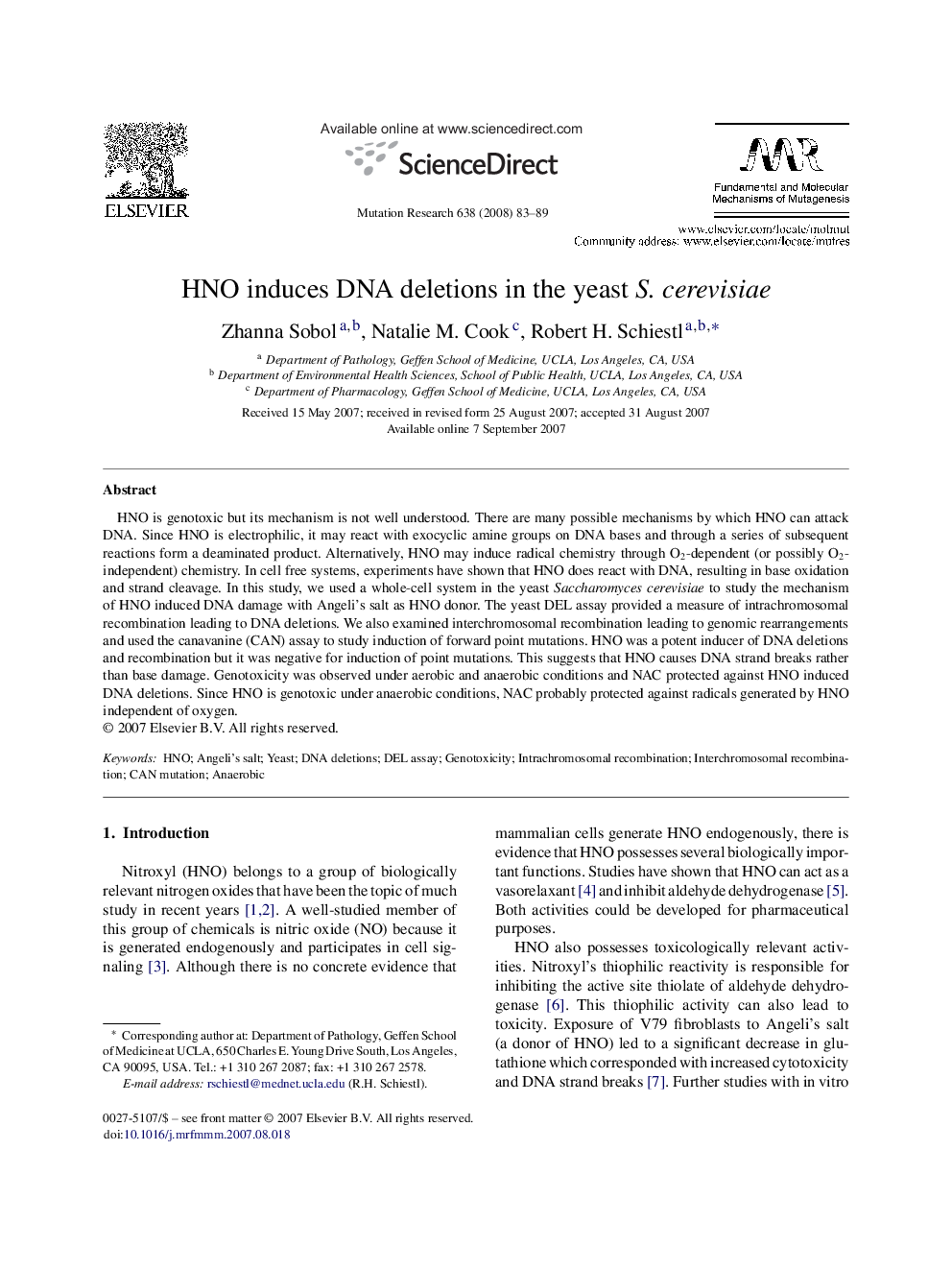| کد مقاله | کد نشریه | سال انتشار | مقاله انگلیسی | نسخه تمام متن |
|---|---|---|---|---|
| 2147199 | 1548402 | 2008 | 7 صفحه PDF | دانلود رایگان |

HNO is genotoxic but its mechanism is not well understood. There are many possible mechanisms by which HNO can attack DNA. Since HNO is electrophilic, it may react with exocyclic amine groups on DNA bases and through a series of subsequent reactions form a deaminated product. Alternatively, HNO may induce radical chemistry through O2-dependent (or possibly O2-independent) chemistry. In cell free systems, experiments have shown that HNO does react with DNA, resulting in base oxidation and strand cleavage. In this study, we used a whole-cell system in the yeast Saccharomyces cerevisiae to study the mechanism of HNO induced DNA damage with Angeli's salt as HNO donor. The yeast DEL assay provided a measure of intrachromosomal recombination leading to DNA deletions. We also examined interchromosomal recombination leading to genomic rearrangements and used the canavanine (CAN) assay to study induction of forward point mutations. HNO was a potent inducer of DNA deletions and recombination but it was negative for induction of point mutations. This suggests that HNO causes DNA strand breaks rather than base damage. Genotoxicity was observed under aerobic and anaerobic conditions and NAC protected against HNO induced DNA deletions. Since HNO is genotoxic under anaerobic conditions, NAC probably protected against radicals generated by HNO independent of oxygen.
Journal: Mutation Research/Fundamental and Molecular Mechanisms of Mutagenesis - Volume 638, Issues 1–2, 1 February 2008, Pages 83–89